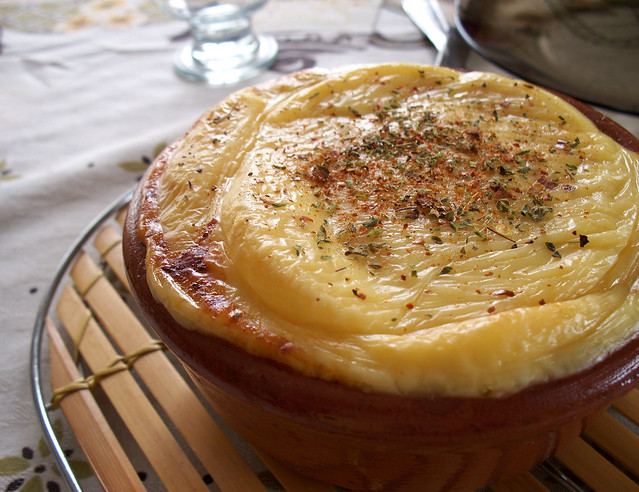
I grew up with a Southern stepmother. She was from Alabama and raised me with grits, biscuits, and award-winning fried chicken (hers won the fried chicken competition one year at the Alabama state fair), as well as boiled peanuts, greens, fried green tomatoes and cornbread dressing (NEVER stuffing). My stepmother wasn't just a Southerner, she was a white Southerner, and I think it is important to make the distinction, especially when discussing cuisine. While her cooking wasn't bad, for someone brought into this world amidst the spices and flavors of Latin America, Southern cuisine - at least that of my stepmother - was bland. Not subtle, like Japanese cuisine or Vietnamese cuisine, or even German cuisine. It was just bland. And it wasn't until I had my first taste of soul food that I realized that Southern food could be zesty and flavorful and comforting....food that nourishes the body and the soul, hence the name. Upon doing research, I discovered that Southern food is essentially African American food, and unless it is made by African Americans, it will usually be missing that essential ingredient: soul. Non African American Southern food, to me, has always been a toned-down version of the real deal - soul food for white folks.
There are always exceptions, of course, but it seems that when someone else tries to play at Southern cooking they tend to be a little too "creative" with their cooking. Yes, the inspiration lies in traditional Southern dishes, but the execution utilizes foreign elements. The results are tasty but never feel authentic and always manage to seem embellished. I always end up asking myself how a soul food version of a dish is so delicious in spite of its simplicity, while the same dish executed by a white Southerner is either bland or has to include so many extra elements. Until I shadow a soul food cook, the answer will remain a mystery, and I'll continue to go to a soul food restaurant when I was Southern food because to me, it's like the difference between real Chinese cuisine and Chinese-American. Once you have the real thing, it's hard to go back to a dumbed down imitation.
Nevertheless, there are good Southern restaurants manned by white cooks/chefs that offer very tasty "nouvelle" Southern cuisine - creative, sometimes gourmet, twists on classics their mamas made for them or recreations of what their most-likely-black cooks prepared in their kitchens. The food at these restaurants can be subtle, which is definitely a step up from being bland, and when the cook/chef has some sort of culinary background or just a level head on his/her shoulders, the unique creations being served up can be quite glorious. For instance, adding fresh herbs and garlic to chicken and dumplings - superb idea! Or adding some bold spices to a fried chicken marinade - ingenious!
Sometimes, however, one has the misfortune of going to a Southern restaurant where the creative ideas are not always well thought out, and the resulting dishes turn out to be both bland and a little disturbing on the palate. Such was the case during a recent dinner at Portia's, a new restaurant on Oakland Park Boulevard, in Broward County. The restaurant took over the space of another restaurant, called The Cellar, which served mostly German and central European dishes. Although I never dined at the old restaurant, it was obvious that some of the old décor remained - embossed copper ceiling panels, tiffany lamps, and romantic, impressionistic portraits. Portia's own touch was most noted in the presence of paper place mats displaying the image of a pig, which was a kitschy touch, but didn't seem to match the rest of the restaurant. The lighting was very low inside, but somehow failed to be romantic. The tables were cheap-looking, as were the chairs. Paired with the disco soundtrack and the numerous senior citizens dining within, the ambiance was a depressing portrait of a retirement home dining hall for gay men.
The service was friendly. Our waitress offered us a complimentary bowl of house made pork cracklins, which were good although it would have been nice to have something with which to cut the richness. Maybe I'm channelling Mexican cuisine, which uses a squeeze of lime and some chile, or Nicaraguan cuisine, which serves them with a vinegary slaw. It might not be traditional for Southern cuisine, but it sure would be a nice innovation. While the pork cracklins were a nice touch, it would have been nice to get some biscuits or corn bread or dinner rolls. No such bread ever arrived at our table, and I think it had to be ordered and paid for.
An appetizer of fried green tomatoes, which our waitress recommended, were just dissatisfying. There seemed to be something wrong with the tomatoes, as if they were getting ripe or they were pickled. The flavor was off. Additionally, they were coated in panko bread crumbs, which I didn't care for. The remoulade sauce with which they were served was practically inedible and clearly not a remoulade. It was like a thinned-out tartar sauce with a lot of vinegar and paprika and little chunks of unrecognizable pickled vegetables and onions.
For my entrée, I ordered a pork tenderloin sandwich, which was not a Southern dish, but more of a specialty of Indiana, Iowa, and the surrounding areas, which I guess would kind of go with the "country" theme of Portia's. What I received were two breaded, fried pork cutlets coated with something I'd never seen before. This came with a buttered and toasted commercially-made bun of the cheaper variety, an iceberg lettuce leaf, a few slices of tomato, and some cheap neon green pickle chips. I did not care for the breading one bit! Upon first looking at it, I thought that it was perhaps comprised of cornflakes. Upon biting into a piece, it was determined that it was coarsely crunched up saltine crackers; they were not ground nor crumbled but crunched up, meaning that there were 1/4" pieces of crackers soaked in days-old fryer oil surrounding this thin slice of pork cutlet. I asked the waitress what the breading consisted of, just to be sure, and she said it was a "secret recipe". Well, that's once secret that Portia's can keep to themselves! As a side dish, I ordered a side of peanut cole slaw. Again, maybe I was thinking about a different cuisine, perhaps somewhere in Southeast Asia, because what I had in mind was nothing like what I was served. I was soon reminded as to what kind of restaurant I was at when I took a bite of the shredded cabbage tossed in mayonnaise, ground peanuts that I couldn't tell were in there at first, and absolutely nothing else. There really was nothing else in that cole slaw...and it tasted that way.
John ordered the fried chicken, for which the restaurant is supposedly well known. The chicken is made to order, which means that you can be waiting an average of 20 minutes for your order, which I think is the amount of time we waited. The chicken was flavorful and juicy with a crispy crust and offered what one would expect from good fried chicken. The dark meat pieces were characteristically tender, and the breast was surprisingly moist. Portia's fried chicken is definitely a cut above most places, but definitely not the best. John's sides, like mine, were abysmal. His creamed corn should have had quotation marks surrounding it on the menu - a tiny condiment bowl filled with corn nuggets, bacon bits, and milk that appeared as if it was thrown together at the last minute. His lima beans were satisfactory but also arrived in a minuscule bowl. Honestly, I believe I've had banchan at a Korean restaurant - those little condiments that come with every dish of Korean barbecue - that were more generous than the side dishes at Portia's.
The only redeeming moment at Portia's came at the end of the meal when John and I partook in a slice of very good coconut cream pie. If there was one thing that would bring me back to Portia's, it would be that, and just
maybe some fried chicken...although it would be awfully tough to come back. While I'm definitely one to notice good food at a restaurant before anything else, the ambiance at Portia's was just too depressing, and the food just wasn't good enough to warrant a second visit. Especially considering that
Betty's Soul Food is just a little closer in distance from us, there really is no reason, in my opinion, to return to Portia's.
Portia's
199 East Oakland Park Blvd
Oakland Park, FL 33334


































